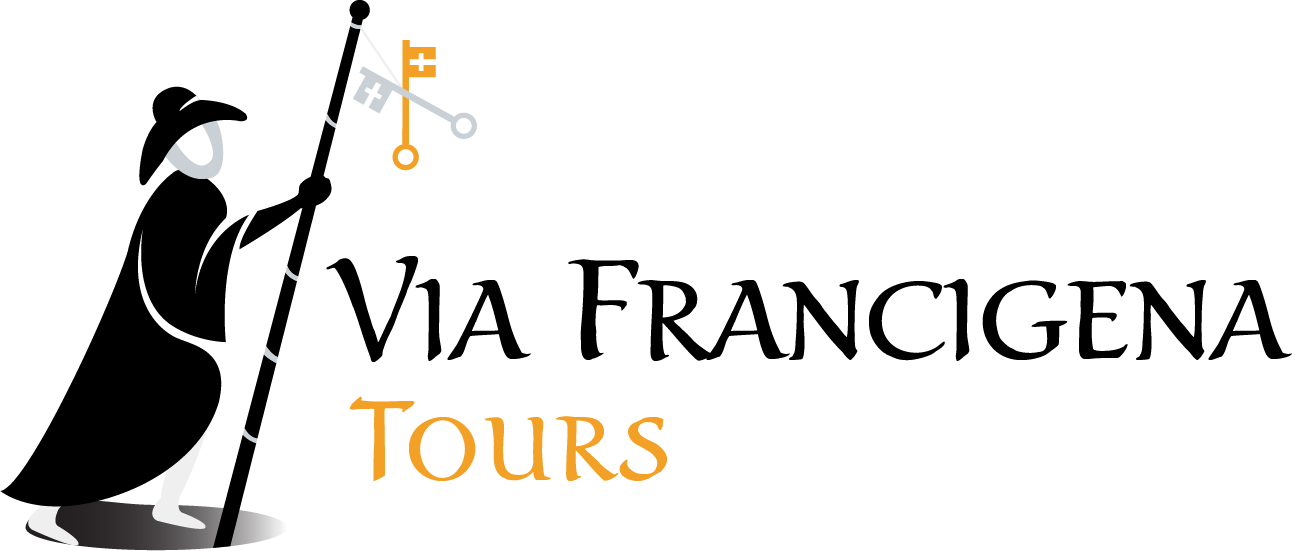Lausanne to Grand-St-Bernard Pass is a 126 km, 8 day self-guided walk along the Swiss Via Francigena. It goes from Lausanne, around Lake Geneva, then through the Rhône Valley and into the Swiss Alps. Throughout the whole walk there is stunning alpine scenery, lake and river views, vineyards, pine trees and lots of Swiss cows. But the walk is only available in the summer months from mid-June to Mid-September. Continue reading for more information on our Lausanne to Grand-St-Bernard Pass tour!
The walk from Lausanne to Grand-St-Bernard Pass abounds with sublime alpine panoramas, lake views, vineyards and medieval Swiss villages. Due to alpine snow conditions it is only possible to walk from Martigny to Grand-St-Bernard from mid-June to mid-September. This walk is not for the inexperienced walker, prior conditioning to high altitude walking is highly recommended. Alternatively you can walk Lausanne to Martigny for an easier walk with no high altitudes that is still absolutely stunning.
Arrive in Lausanne and check into hotel. Then visit Lausanne Cathedral and stamp your Pilgrim Credential. After that, take a tour of the old town, St Francis church and the Lake.
The walk from Lausanne begins at Ouchy-Olympique Centre and continues along the foreshores of Lake Geneva. Sights on the way include impressive sculptures and the beach at Pully and boat port at Lutry. After 9 km the walk leaves the Lake and continues up into the vineyards to Espesses. There are magnificent views of the vineyards, Lake and Alps for the next 9 km walking through the UNESCO listed Lavaux vineyards and Saint-Sephorin village. Arriving back to the Lake at Vevey there are more lake views, sculptures and the Old Town.
Leave Vevey and walk beside the Lake for 2 km enjoying the sculptures, Lake and views of the Alps. Then there is a short distance along the main road and back to the Lake at Clarens. Walk around the Lake towards Montreux admiring the flowers, sculptures and Lake views. After walking for 10 km arrive at Château de Chillon and visit the Castle. At Villeneuve leave the Lake and head into the Rhône Valley. It is a 14 km walk through fields and vineyards surrounded by Alps to Aigle. Here there is another magnificent Castle to visit and walk across the Napoléan Bridge leading into the historic centre.
It is a 25 km walk to Saint-Maurice through the vineyards, into the Alps, and along the Rhône River. The famous Abbey was founded in 515 CE and it is the oldest Christian monastery in the western world. It has been a place of continuous prayer for over fifteen centuries. On arrival we visit the Basilica, the Archaeological Museum and the Treasury. Then end the day sampling the local food and Swiss wine.
It is a pleasant, level walk to Martigny through fields, pastures, old towns and the Rhône river. The highlight is the Pissevache waterfall in its forest setting. In Martigny visit the Barry Foundation to see the Saint-Bernard Dogs and the Via Francigena Museum. Nearby is an ancient Roman amphitheatre and the Roman Via Poenina. The Fondation Pierre Gianadda usually has an amazing sculpture garden and art exhibitions.
The walk to Orsières follows the River Dranse and then into the Alps. To avoid traffic there is a steep ascent into the Alps from Martigny-Bourg. Then down to the River Dranse along a narrow trail to a bridge crossing. Then through alpine trails passing through Bovernier and Sembrancher. The walk to Orsières passes through alpine villages and along forest alpine trails with magnificent views of the Alps. At Orsières there is a picturesque old town and the historical St Nicolas Church with its remarkable Romanesque bell tower and a nearby bridge of historical significance for crossing the River Dranse.
Leave Orsières crossing the river Dranse and begin a steep ascent into the Swiss Alps. The 15 km walk continues along well marked alpine trails and unsealed roads running beside the River Dranse or through forests. The scenery is spectacular always surrounded by Alps and pastures dotted with Swiss cows and alpine chalets. Bourg-St-Pierre is an interesting old town and church and places of historical interest and reminders of Napoléan’s visit.
The walk begins at Bourg-Saint-Pierre and continues through alpine trails following the River Dranse. Then the trail meanders around Lac des Toules heading above the tree line. After this the ascent becomes quite steep but the scenery is magnificent walking through streams and lichen clad rocks surround by distant Alps. The high alpine tracks lead to the Hospice at Grand-Saint-Bernard with its genuine pilgrim hospitality. Visit the Hospice Museum, the St Bernard chapel and in summer see the Grand-St-Bernard dogs.
The tour ends after breakfast at Grand-Saint-Bernard Pass. To return to Geneva, take the bus to Orsières, and then the train to Geneva Airport. Or, join up for our Aosta Valley tour and continue along your way!
If you have a specific part of the Via Francigena that you would like to explore, we can design a tour to suit your needs. Simply fill in the form on the “Custom Tour” page and we will contact you.
Via Francigena Tours offers a Lucca to Siena 10 day tour through the heart of Tuscany. It covers a distance of 125 km through the heart of the Tuscan landscape with overnight stays in hilltop towns like San Miniato, Gambassi Terme, San Gimignano and Monteriggioni. Highlights are the Tuscan food and wine and the amazing history and culture of the region. So sign up for a tour anywhere between April and October.
